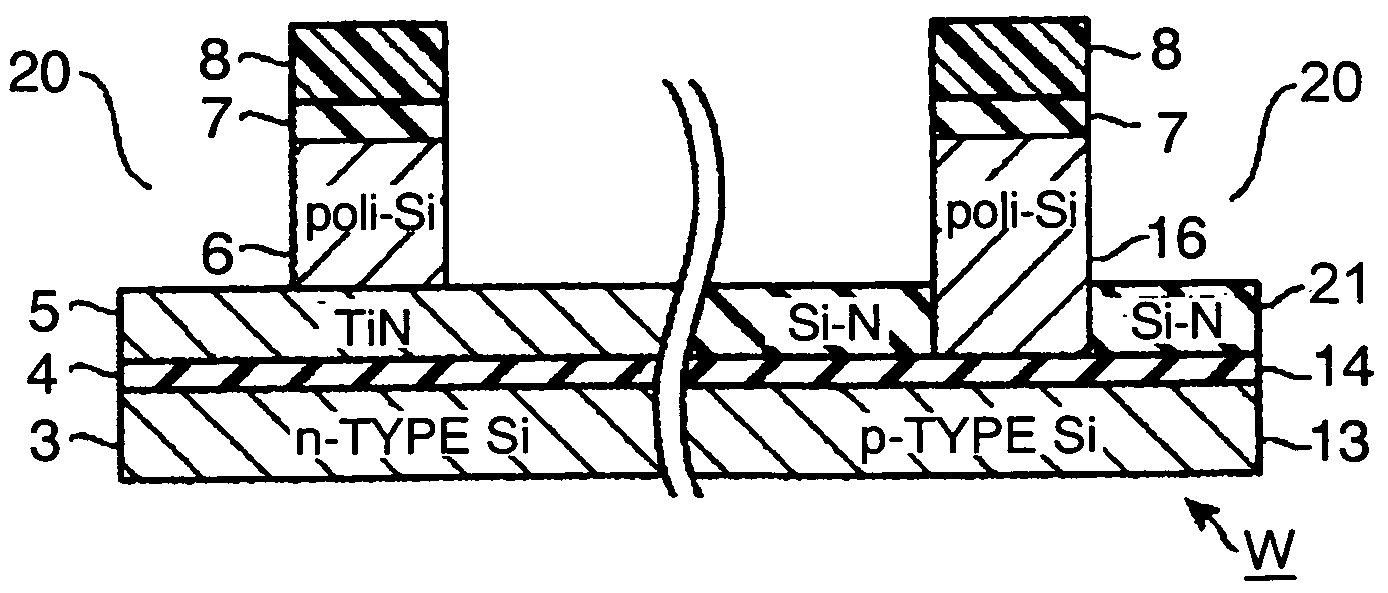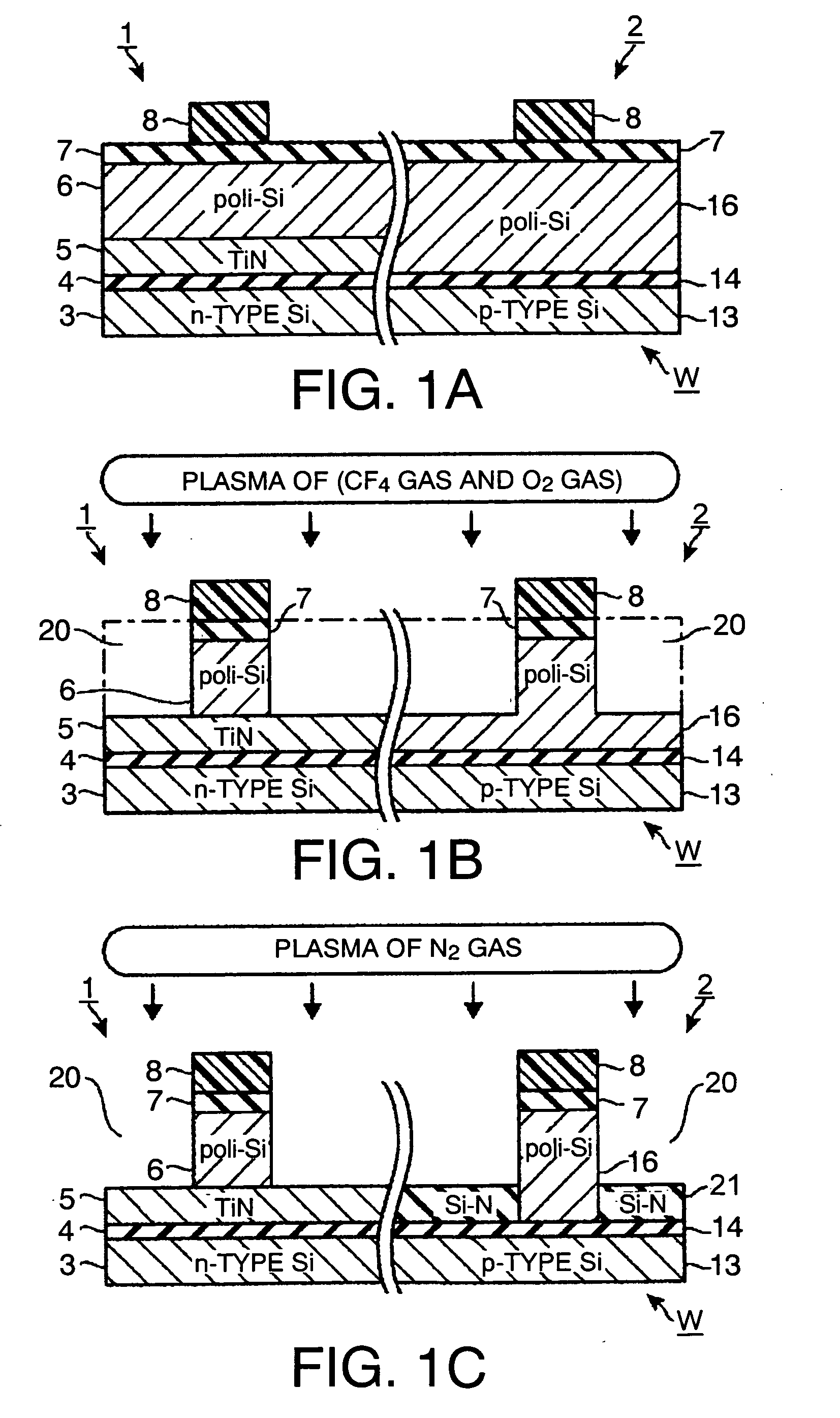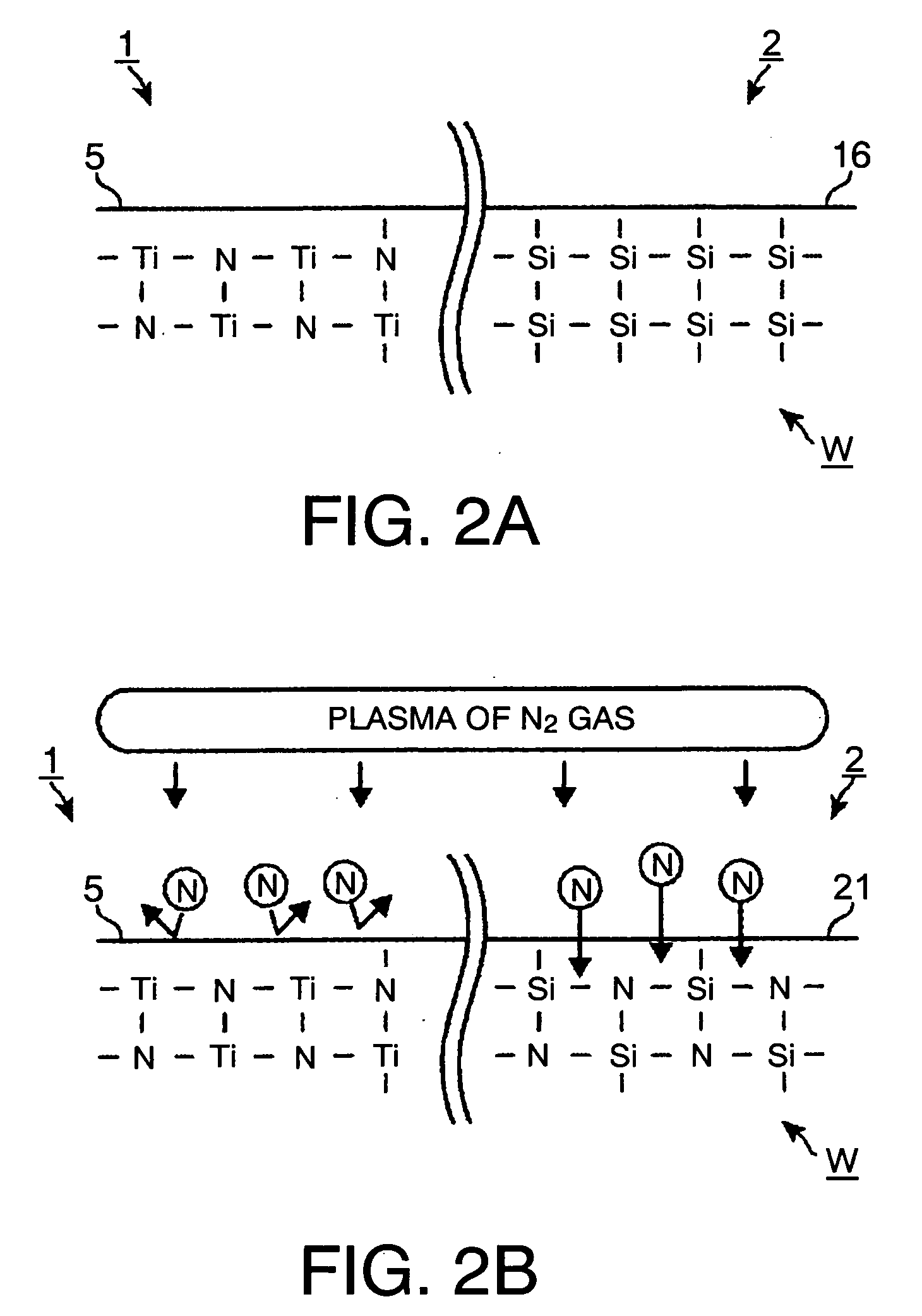Plasma etching method
a technology of etching method and plasma, which is applied in the direction of basic electric elements, electrical equipment, semiconductor devices, etc., can solve the problems of gate depletion, increase of leak current, and increase of threshold voltage, and achieve the effect of large etching selection ratio
- Summary
- Abstract
- Description
- Claims
- Application Information
AI Technical Summary
Benefits of technology
Problems solved by technology
Method used
Image
Examples
example
[0063]Next, an experiment conducted for confirming the effect of the present invention is described. In the experiment, two wafers W, each having the structure shown in FIG. 1A, were etched by the aforementioned plasma etching apparatus up to the upper end surfaces of the titanium nitride films 5.
[0064]Thereafter, one wafer W was subjected to a nitriding process, which was performed under the conditions shown below. The other wafer W was not subjected to the nitriding process.
[0065]Following thereto, the titanium nitride films 5 of the two wafers W were respectively etched under the etching conditions shown below. Then, a selection ratio between the titanium nitride film 5 and the silicon film 16 (nitride film 21) at this time was calculated for each wafer W. The selection ratio was calculated in the following manner. Namely, with the use of a measuring unit for an etching-finish-time-point (illustration omitted in FIG. 5) disposed on the plasma etching apparatus, there were measure...
PUM
| Property | Measurement | Unit |
|---|---|---|
| thicknesses | aaaaa | aaaaa |
| thickness | aaaaa | aaaaa |
| thicknesses | aaaaa | aaaaa |
Abstract
Description
Claims
Application Information
 Login to View More
Login to View More - R&D
- Intellectual Property
- Life Sciences
- Materials
- Tech Scout
- Unparalleled Data Quality
- Higher Quality Content
- 60% Fewer Hallucinations
Browse by: Latest US Patents, China's latest patents, Technical Efficacy Thesaurus, Application Domain, Technology Topic, Popular Technical Reports.
© 2025 PatSnap. All rights reserved.Legal|Privacy policy|Modern Slavery Act Transparency Statement|Sitemap|About US| Contact US: help@patsnap.com



